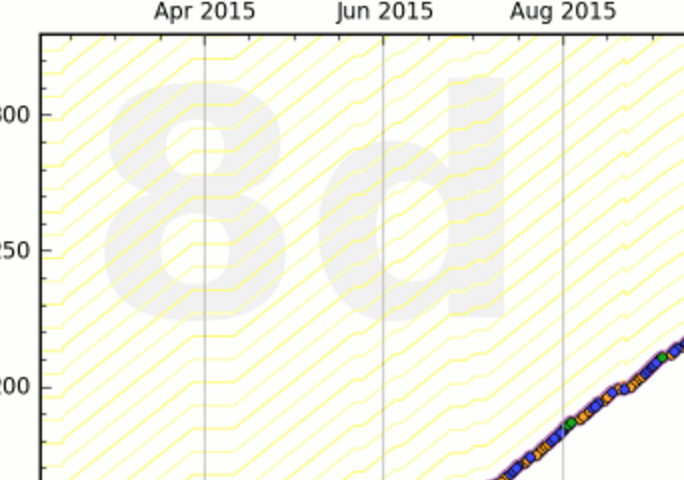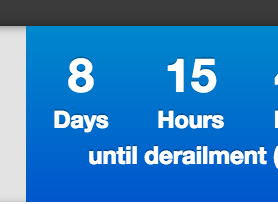Hi folks. I have a question before I set any goals: do I have to check in every 24 hours to put data in? My problem is that I don’t have a smartphone and I’m often away for the weekend so don’t have access to my computer. I understand I can put a “break” in for holidays I know about in advance, but what happens if I don’t enter any data for a couple of days? Can I set the intervals to be about 3 days to get around this problem? Thanks for any tips!
Yes, we solve that by letting you accumulate safety buffer. So, for example if you always get your graph green by Friday then that means enough safety buffer to get you through the weekend. Hugely valuable to hear questions about this as we figure out how to make it more obvious for newbees!
Can you be more specific about how I would get into the green by Friday? Does this mean I’d have to be in advance of my target so that on Friday I’m where I need to be by Sunday night, for example? Does Beeminder assume that if I haven’t input any data I’m on the same number, i.e. a straight horizontal line?
Thanks!
Yes.
If you have your goal set to, say, 7 per week, then you need to do on average 1 per day. But you can also do 2 one day and 0 on another day. Or 3 on one and 0 on two, etc. The number of days you can afford to do zero in a row on is your “safety buffer”. That’s the number displayed on the graph like:
and the dashboard:
So I can ignore this goal for 8 days in a row.
That’s one way to think about it. But in this case a better way to think about it is that always maintaining two (or three, or whatever) days of safety buffer IS your target. If you always maintain 3 days of safety buffer then it doesn’t matter if you can’t add data for 3 days. Then you can just add the data when you get access again and be right back on track.
Particularly helpful here is the fact that the graph changes colors depending on the number of safety buffer days. Red → 0, orange ->1, blue → 2, green → 3. So your target could be to always keep the goal green. From a psychological point of view, it seems to help immensely that your target is a color rather than a number. It feels much more satisfying to see a goal change from, say, blue to green than it does to see a number increase from 2 to 3.
Thank you! That’s reassuring.
Sadly, this is not true, as I mentioned here. You can easily have a green goal with less safety buffer than an orange goal. I don’t mean to nitpick you, but I want to try to be as accurate as possible when there are Newbees around. ![]()
EDIT: The reason is that the colors are computed based on a concept of “lanes” and whether you are in the “right lane” or the “wrong side of the road” or “off the road”, etc. But these don’t translate directly into a number of safe days whenever the road slope changes, most often due to a derail. This is also why brand-new goals start in the blue despite having a week of safety buffer!
EDIT2: Heh I also notice that just by sheer good luck, my image above of the 8 days safety buffer is in blue. ![]()

